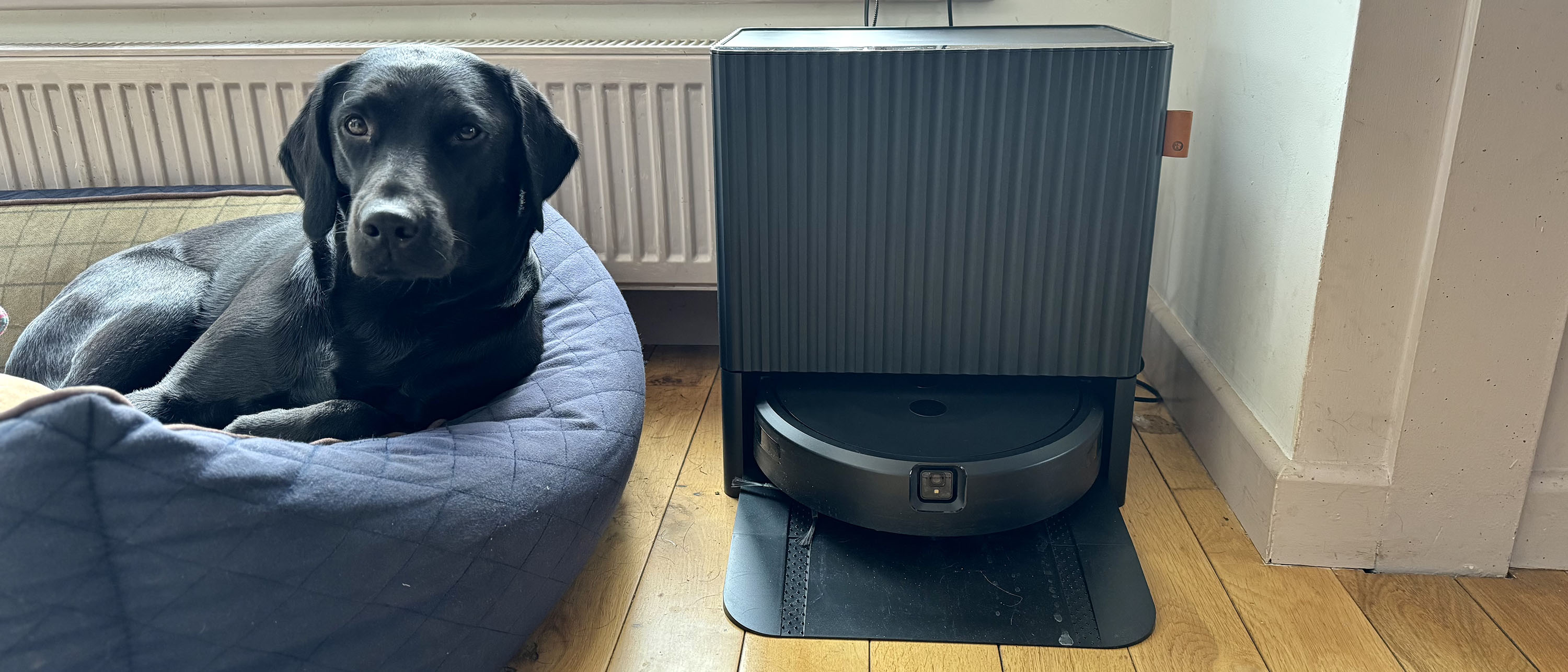TechRadar Verdict
I've always been a fan of iRobot products and I really wanted to like this range-topping hybrid model, but despite its mostly passable performance at both vacuuming and mopping, there are too many disappointing elements within the package to wholly justify its relatively high asking price. Could do better.
Pros
- +
Nice looking docking station
- +
Decent obstacle avoidance
- +
Satisfactory hard floor performance
Cons
- -
Poor cleaning base suction
- -
Inefficient mop system
- -
Messy mop cleaning
- -
Noisy
- -
Not cheap
Why you can trust TechRadar
iRobot Roomba Combo 10 Max: two-minute review
Despite the high-end build quality, the 2-in-1 iRobot Roomba Combo 10 Max is quite some way behind the competition in terms of mapping, vacuuming, auto bin emptying and mopping. And although its price has dropped from an initial $1,399 / £1,499 to a more reasonable $999.99 / £799, I still consider this bot too expensive for what it offers, especially when compared to the almost sci-fi level of tech that companies like Roborock, Eufy, Dreame and Narwal are fitting to their products.
Although it isn't equipped with an extendable side brush, the iRobot Roomba Combo 10 Max is very capable at vacuuming hard floors. However, it struggles on carpet, especially if there's a lot of pet hair on it. Its bin-emptying and mopping system, too, are very underwhelming.
In iRobot's defense, the company apparently has some of the best troubleshooting tech support in the business, but then the secret to any good tech is to not require any troubleshooting at all – technology like this should work efficiently, reliably and logically which, sadly, this bot isn't especially good at, at least when compared to the extremely high level of futuristic smarts from the majority of its nearest competitors.
iRobot Roomba Combo 10 Max review: price & availability
- List price: $1,399 / £1,499 (regularly discounted to around $999.99 / £799)
- Launched: July 2024
The iRobot Roomba Combo 10 Max was announced in July 2024 and went on sale in the US, UK and elsewhere shortly afterwards. It's available to buy direct from iRobot, or via third party retailers like Walmart or Amazon.
At time of writing, this model sits right at the top of the iRobot Roomba range in terms of price and specs. The official list price is $1,399 / £1,499 – firmly in the premium price bracket, and up there with the most expensive models on the market. However, by the time my UK review unit arrived, the price had dropped to £999. At time of submitting this review it's now it's £799 – a huge drop that suggests that iRobot looked closely at the Chinese competition from Dreame, Roborock, Eufy, Deebot and Narwal and felt they had no option but to bring the price crashing down. In the US the price-drop is less, but not insignificant: it's now $999.99.
That's still in the premium bracket, but lower down. And yet, I still think that even the current, discounted price is too big an ask given how far the vast majority of the competition is ahead of the game.
- Value for money score: 2.5 out of 5
iRobot Roomba Combo 10 Max specs
| Max suction: | Info unavailable |
| Robot size (W x D): | 13.3 x 33.3" / 33.9 x 33.8cm |
| Robot height: | 3.4" / 8.7cm |
| Dock dimensions (W x D x H): | 19.7 x 15.7 x 17.3" / 50 x 40 x 44cm |
| Dust bin volume (onboard): | Not stated |
| Dust bin volume (dock): | Approx 2.5L |
| Water tank volume (dock): | 2L (clean); approx 1.8L (dirty) |
| Base type: | Charge, dust empty, mop pad clean and dry |
iRobot Roomba Combo 10 Max review: design
- Low-profile bot and attractive dock
- Fixed mop that shifts to sit on top of the bot when not required
- Loud in operation
There's a fair bit to get into here, so I've split the design section into the robot design and the dock design.
Robot design
With its long history in both industrial and military-use robots, US-based iRobot has been at the forefront of robot vacuum design for over two decades. But like any industry that finds favor with the public on a massive scale, it wasn't too long before a flurry of copycats jumped on the bandwagon with a host of new innovations and improved software design, to the point that today iRobot finds itself competing with around 15 other companies, mostly from China, a world–leader in robotics.
Sadly, on evidence of the company's latest machine, the iRobot Roomba Combo 10 Max, it seems that the brand everyone went to as a first port of call has begun to lag behind the mainstream, with some reused technology and not many striking new innovations.
Let's start with the robot itself. It's fitted with a twin rubber roller system that should work wonders on carpet by beating deep into the pile to release as much dust and debris as possible.
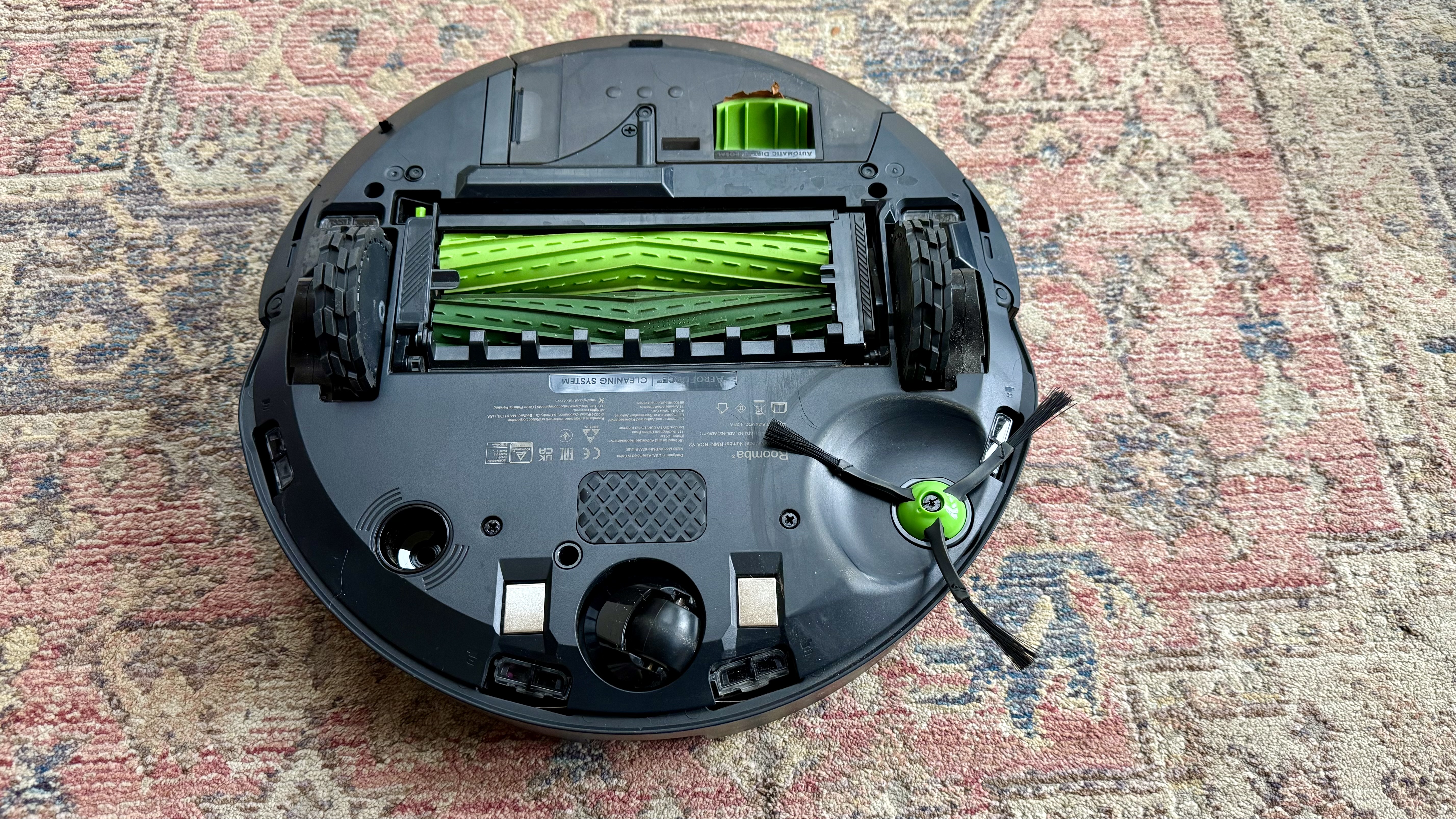
However, while the rollers seemed perfectly capable on hard floor, they struggled at collecting pet hair from carpet (more on that later). I'm also wondering whether there's a lack of suction power. iRobot is pretty much unique amongst robot vacuum brands in not releasing suction specs, arguing that it's not a good indicator of pickup power. All I have to go on is that the unit offers three suction levels – Quiet, Balanced and High – and that it offers double the 'Standard' pickup power of most of the rest of the iRobot range.
It's a shame iRobot didn't opt for an extendable spinning side brush because this new innovation is very good at stretching into corners where the robot's centrally located brush rollers cannot reach. It's also a shame that iRobot only ever made one robot vac that was D-shaped – the excellent Roomba s9+ – so that even its fixed side brush could reach into any right-angled corner. But then again almost all robot vac manufacturers other than Dyson and Eufy continue with a circular design for their robots, and I know not why.
On the plus side, I'm thrilled to see that this bot is capable of riding over loose hard floor rugs without ruffling them up too much or worse, getting stuck in the middle of a rug mountain.
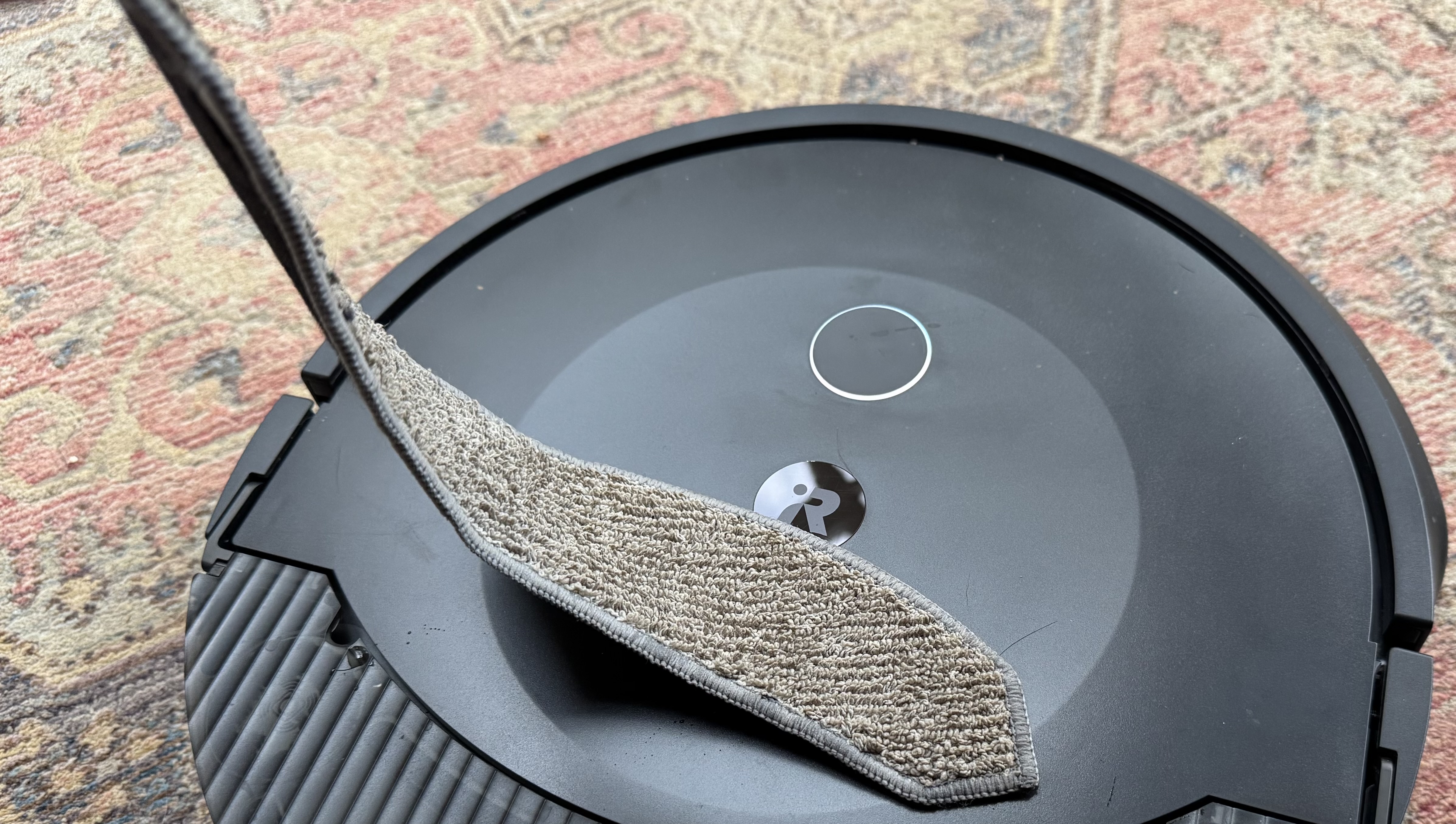
Where things fall away considerably is in the design of the Combo 10 Max's rear-mounted mopping system, at least by today's standards. When robot vacuum manufacturers originally discovered that they could include a wet pad on the rear to mop a floor while the front end did the vacuuming, they opted for a static wet pad that just dragged along behind as the robot moved around.
Then someone noticed that the wet pad was being dragged across any carpet that the robot needed to traverse en route to its next place of work. Roborock solved this conundrum by fitting a mechanism that raised the rear mop a few centimeters whenever the robot was on carpet. It was a revelatory innovation that others would soon adopt for their own products.
However, iRobot went even further with its earlier Combo j7+ model and instead of just raising the mop a few centimeters – which is plenty enough on all but the deepest of carpet pile – it developed a convoluted system that not only raised the mop but placed it on top of the rear of the machine.
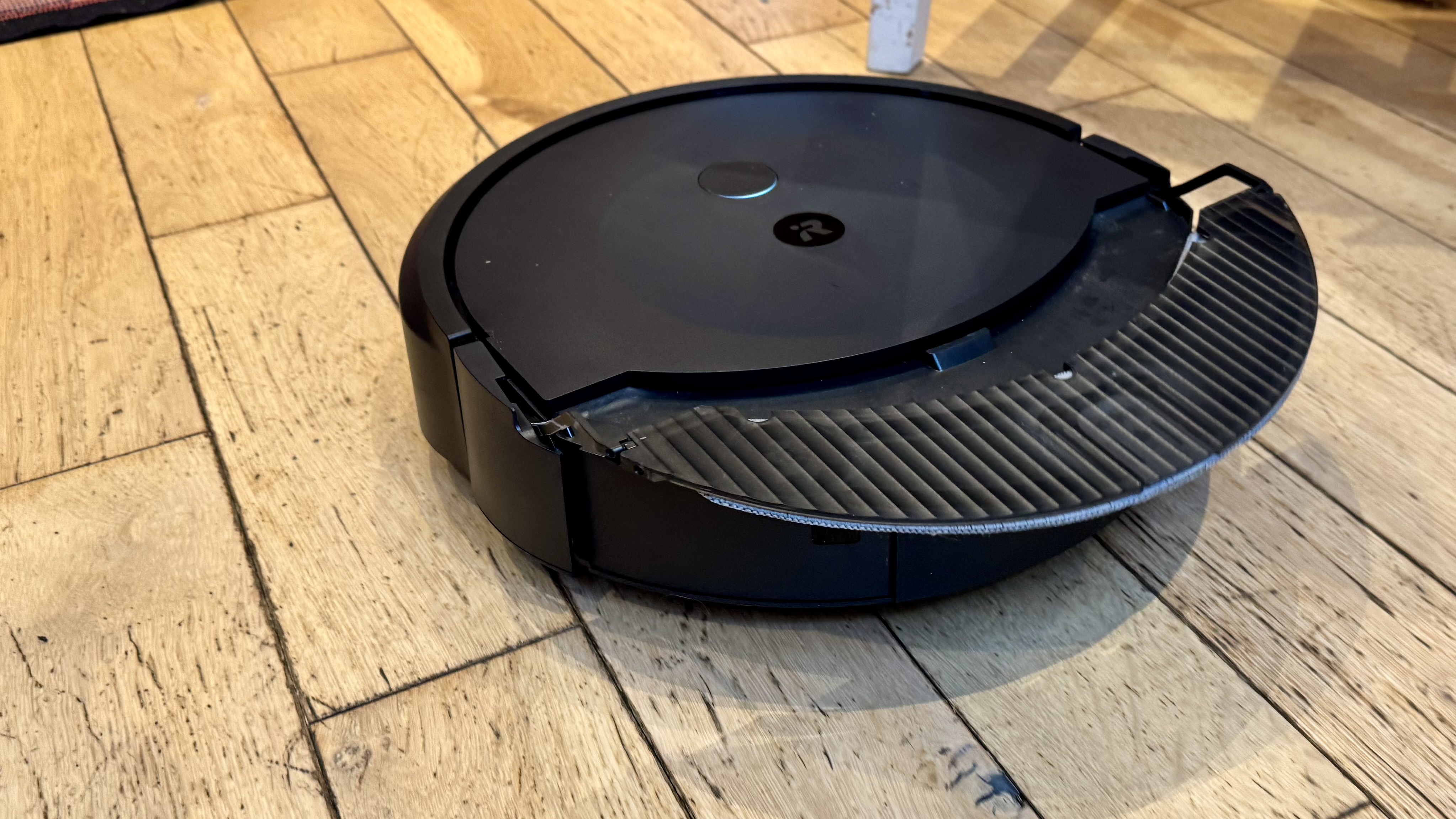
The very same system is in use on the Combo 10 Max. Which brings me to one of the biggest disappointments with this machine. You guessed, the nature of static mop itself. Anyone who has ever removed a floor stain using their hand and a wet cloth will know that a few tight circular swirls is more efficient than just swiping from one side to the other.
Consequently almost every other manufacturer has already dropped old-fashioned static mops like this for spinning towel-covered dual circular mop pads or, as in the case of Eufy, a cylindrical spinning towel. Moreover, some models like the Dreame L40 Ultra and Roborock Qrevo Curv even use extendable rear mops that pop out the side to run along skirting boards and around chair legs. By stark contrast – for a premium-spec model at least – the Combo 10 Max sticks to the old dyed-in-the-wool method of simply dragging a very thin and watery mop pad around behind it, albeit with some pressure applied by the weight of the robot itself.
While a static mop like this will sweep a floor clean of most light stains, it's no match for a pair of fast-spinning mops. Furthermore, the act of positioning the mop above the bot when it's not in use leaves unsightly splashes of water all over the top of the bot's shiny rear surface.
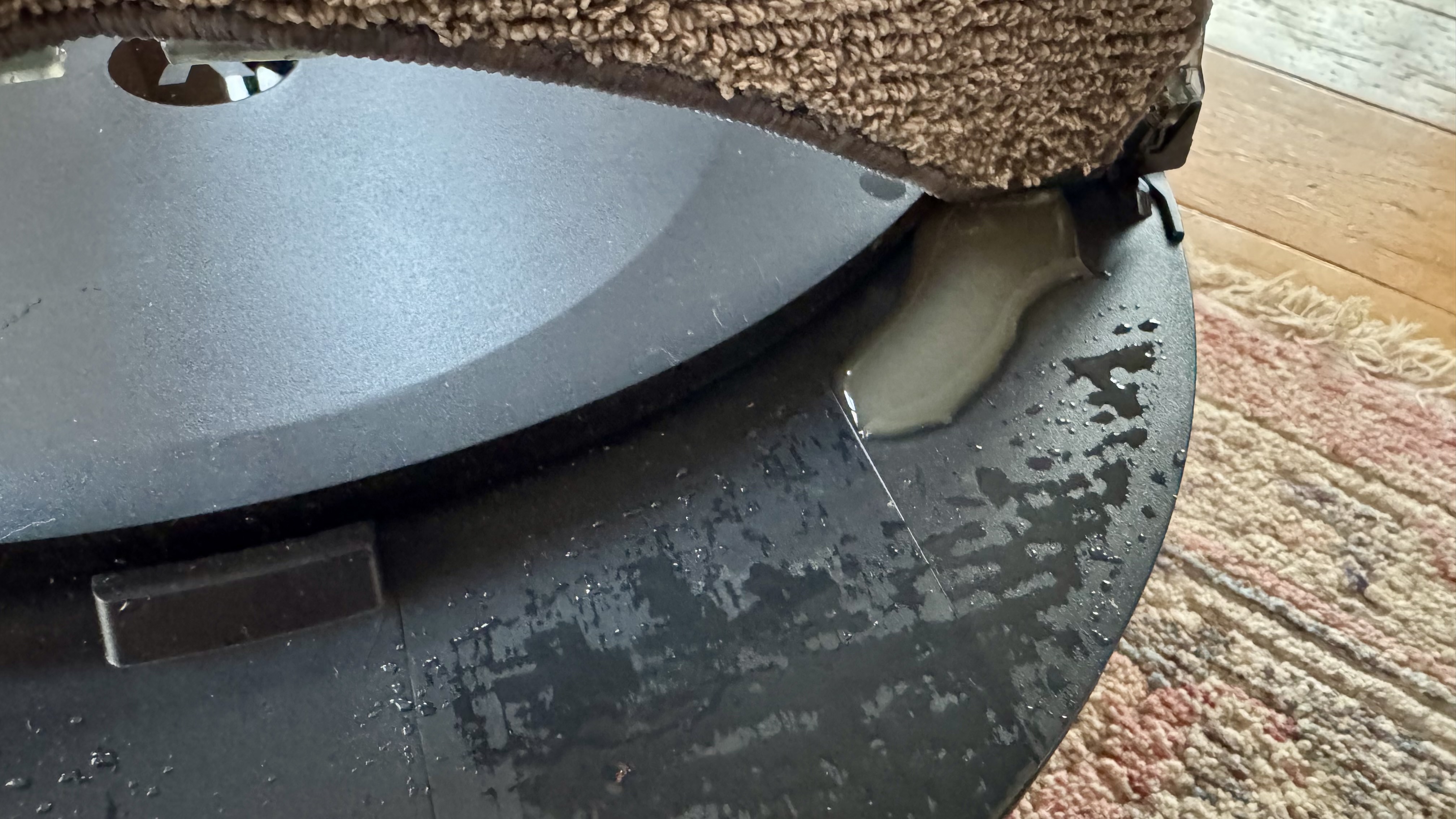
When it comes to navigation around the home, almost all robot vacs these days use LiDAR, a radar-like laser-based range finder that maps an entire home in mere minutes. Like Dyson, iRobot has stuck to SLAM technology using its tried-and-tested RGB camera, LED headlight and sensor system, but this makes it painfully slow to map an entire floor plan. (Here's more on how robot vacuums navigate.)
However, one good thing with this bot is that its front-mounted RGB camera is pretty good at detecting obstacles. It will often pick up obstacles smaller than those detected by most other models, even those fitted with both LiDAR and a camera. Also, having no LiDAR on top of the machine means the bot can venture under low slung furniture and – if it feels like it – punch through sofa and bed valances, which is something LiDAR-based models cannot do.

The Combo 10 Max is equipped with all the usual technology to detect obstacles like stairs, drop-offs, walls and, as mentioned above, most small items like shoes and cables. However, as you'll read in my performance chapter, this robovac's obstacle avoidance is no better than the excellent Dreame L40 Ultra, though I would say that it's still a cut above some of its competitors.
The Combo 10 Max is also armed with a feature called ‘Dirt Detective' and according to iRobot, it 'creates a cleaning plan based on how often each room is cleaned and how frequently dirt is detected in each room. Selecting Dirt Detective to start cleaning will enable your robot to automatically prioritize the dirtiest rooms and use the most optimal cleaning settings for each.' To be honest, this function is very difficult to analyze since there are no real signals to suggest when it's in operation. But I'll give iRobot the benefit of doubt in this regard.
The great thing about most robot vacs is that they're pretty quiet while they go about their daily chores. Invariably all you will hear is a low-pitched hum as it passes by. Conversely, this model's sound frequency is higher pitched and, while it measures at an average 62dB, the nature of its higher frequency whine can be annoying when it's in the same room.
Dock design
The Roomba Combo 10 Max's AutoWash Dock gets an immediate star for great aesthetics. In fact, iRobot has consistently provided some of the best looking docking stations since the launch of the J7+. Yes, at 44cm in height, 50cm in depth and 40cm in width, it's a pretty large thing to have in the lounge or hallway, but in its favor the ribbed matt black plastic surround is a lot better looking than most other docks I've seen and, of course, the color black is far less noticeable in a home situation.
Like most contemporary robot vacs, this model's dock charges the robot, empties its small bin and cleans its mop. Although iRobot doesn't state the size of the AutoWash Dock's dust bag, it seems to be about average (around 2.5 liters).
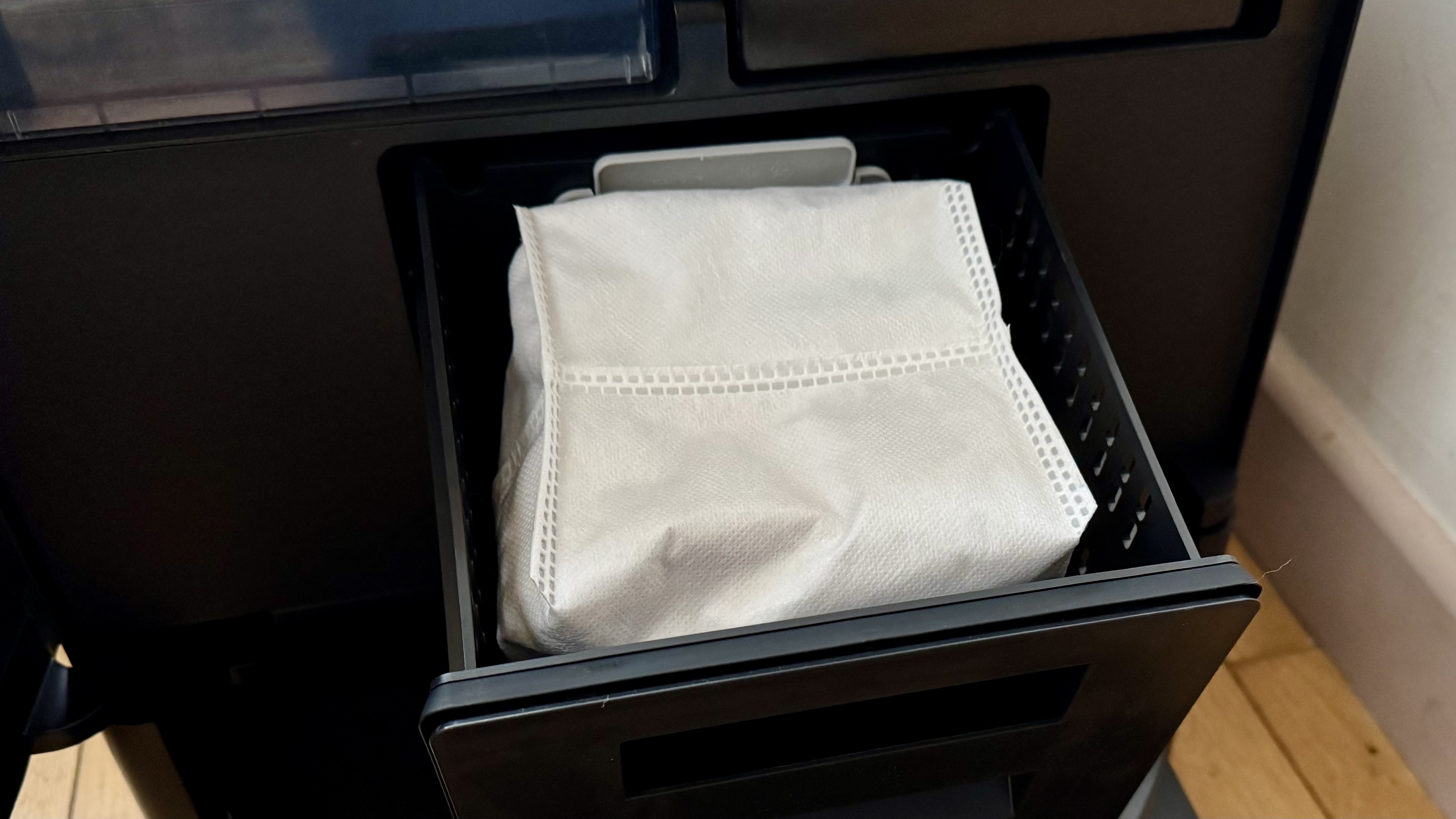
Accordingly, it should hold enough debris in a non-pet household for over a month's worth of cleaning before you need to think about discarding it and fitting a new one (a spare bag is provided in the package). However, if you have shedding pets, you can expect to change dust bags much more frequently – possibly every two weeks.
Since this model also mops, it comes with two larger-than-average rectangular water tanks hidden behind a front door, one for clean water (2 liters) and the other for the dirty stuff (about 1.8 liters).
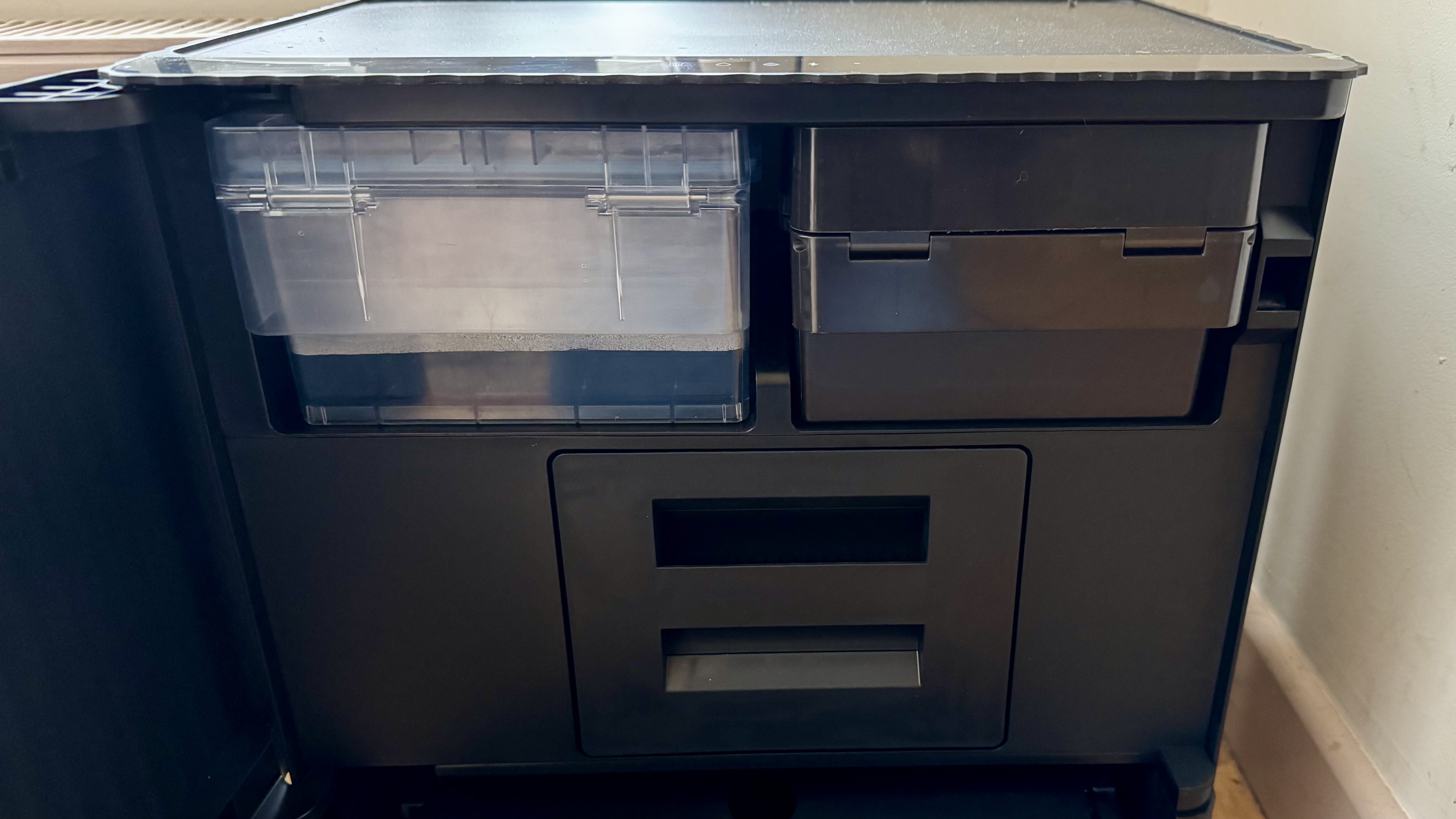
However, both water tanks have horizontal lids and both tanks are positioned horizontally instead of vertically, which means that the weight of the water forces the back of the containers downward as you pull them out.
If, for instance, the simple clip on the dirty water tank isn't firmly in place and you pull it out without bracing for the weight, the whole contents could easily tip backwards as it leaves the plinth and pour the dirty contents all over the floor. Unlike other models, removing and carrying these tanks to the sink is most certainly a two-handed operation.
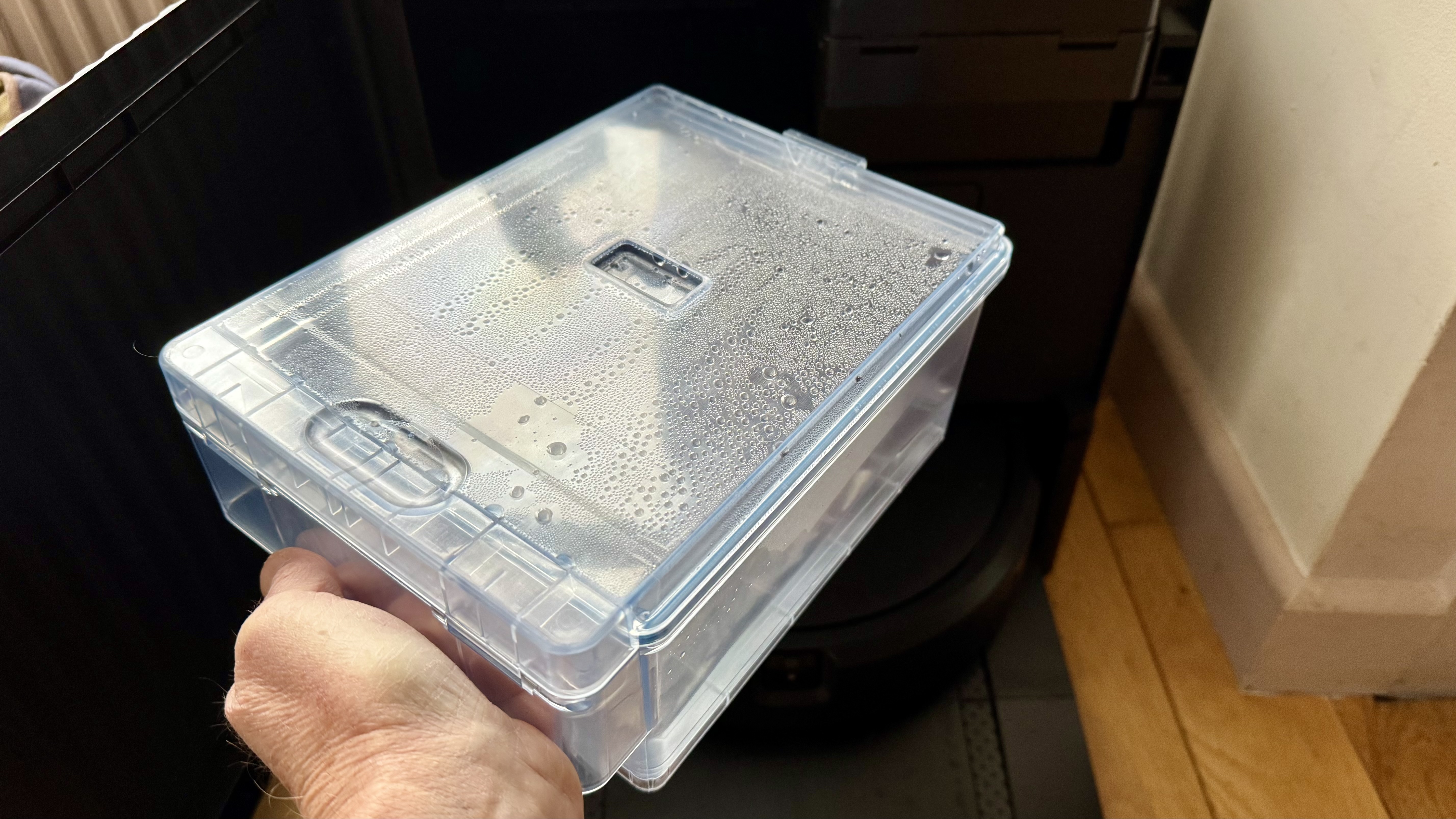
The Combo Max 10s also performs a weird mop-cleaning routine whereby the robot moves in and out of its housing to run its mop over a ribbed rubber roller. That's in contrast to the way other systems work, where the cleaning mechanism moves back and forth across the mopping pad or, as is the case with most modern hybrids, a spinning system that scrubs the circular mops. This dock also uses a soft fan to dry the dock area after washing the pad but since the pad itself is positioned face down above the robot unit, the pad itself doesn't benefit from much drying at all.
- Design score: 3 out of 5
iRobot Roomba Combo 10 Max review: performance
- Decent mopping
- Disappointing suction on carpet
- Dock suction is poor
Again, there's plenty to discuss here, so I've broken this section up into Navigation performance (below), Obstacle avoidance, Vacuum performance, Mopping performance and Dock performance.
Navigation performance
The iRobot Roomba Combo 10 Max uses SLAM (Simultaneous Localization and Mapping) navigation technology, which isn't terrible but also is nowhere near as efficient as LiDAR (Light Detection and Ranging), specifically when it comes to fast and accurate navigation in all levels of light, even complete darkness.
For instance, it took about 30 minutes for the Combo 10 Max to map my open-plan floorspace comprising living room, dining area, kitchen, hallway and passage. A LiDAR-equipped model takes about eight minutes to map the same space.
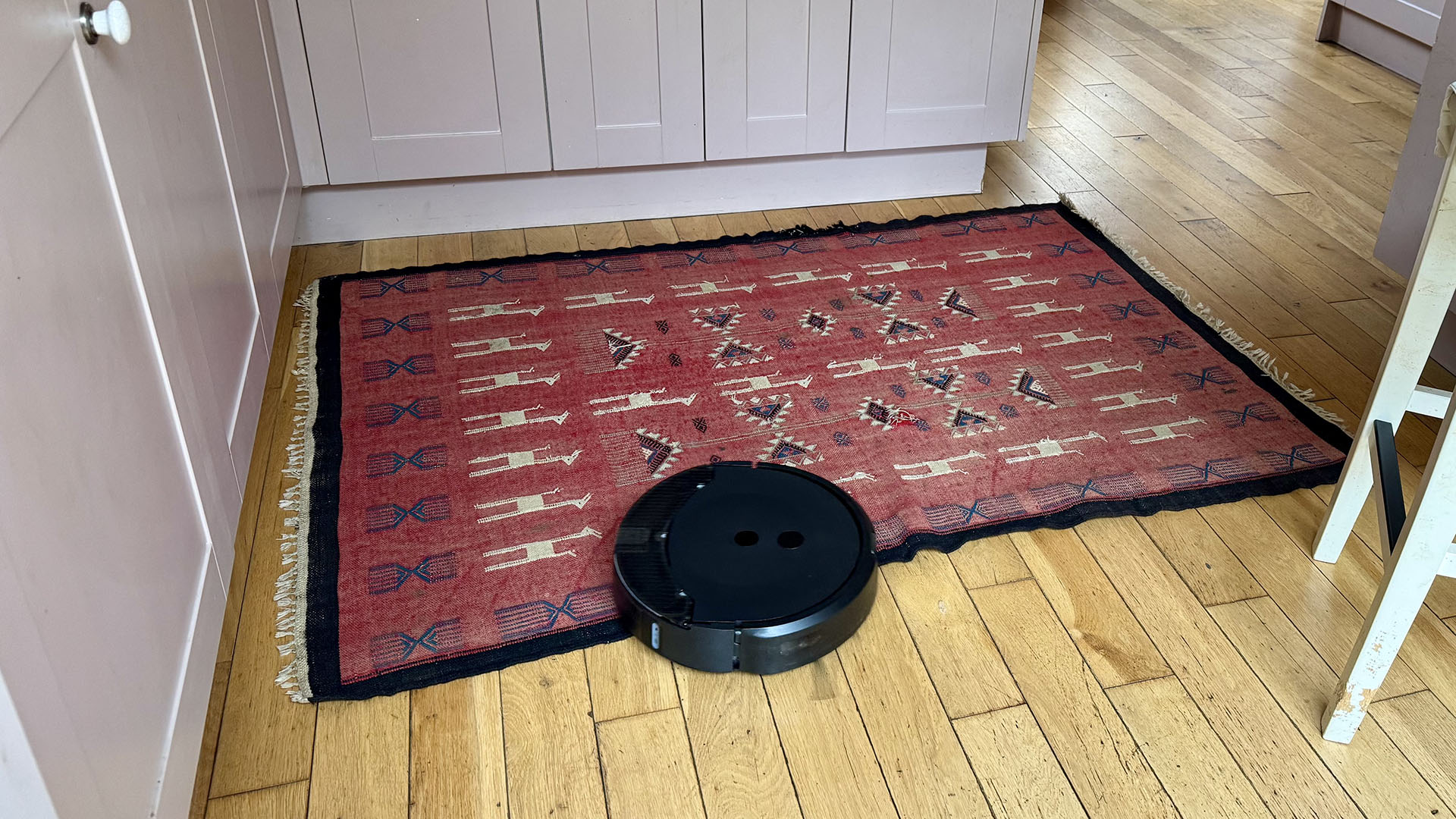
Also, the map it produced was nowhere near as defined as a LiDAR-equipped machine, which produces maps of such accuracy you can see exactly where to select a specific cleaning zone, like a small rug or highlighted section of flooring. LiDAR also allows you to see the robot work in real time and pinpoint its whereabouts using a phone app. Conversely, with this product you may find it tricky to accurately divide one room from another, because it's not particularly clear which bit of the map is which.
To give you some idea how confusing it is to decipher the iRobot map, I endured the following scenario. Firstly, I created a ‘kitchen vac & mop' routine under ‘Favorites' and it mopped the first few feet of kitchen floor, then retracted the mop and vacuumed the kitchen rug. So far so good. However it then completely forgot about the rest of the kitchen (amounting to 70% of the floor space) and went back to its dock to wash the mop. I thought it was just doing a mid-session clean but, no, that was it.

Round two. I set it off on the same task and this time it went straight to the kitchen rug to vacuum it. Then it started mopping the same section as before, only this time the amount of water left behind on the floor was unacceptably high due to the mop having just been washed. It then trundled back to the dock as before.
This confused me, so I checked the map which, at a glance looked okay until I examined it more closely and noticed that the bot had never fully mapped the kitchen during the dry mapping run it performed the moment I set it up. I expected it to at least learn about this unmapped space when it was in the kitchen vacuuming and perhaps think ‘oh, here's a new part of the floor plan I didn't see earlier. I'll go ahead and amend the map'.
In the end I resorted to resetting the whole system to get it back to the start and remapped the whole house again. Bizarrely, it mapped the entire home accurately the second time around, albeit with weirdly-shaped walls that still make it hard to work out what's what.
Obstacle avoidance
I then performed some obstacle avoidance tests and the results were varied but not too bad it must be said. For my first two obstacle tests I perhaps placed too many obstacles in the bot's path because it cut short both rug cleaning sessions and scuttled back home. Test three with reduced clutter proved more successful, though the Combo 10 Max did ride over the circular dog chew that has similarly flummoxed every other bot in previous tests. Sadly, it also failed to notice the wayward shoe lace. However, it did avoid the sock and the phone cable.
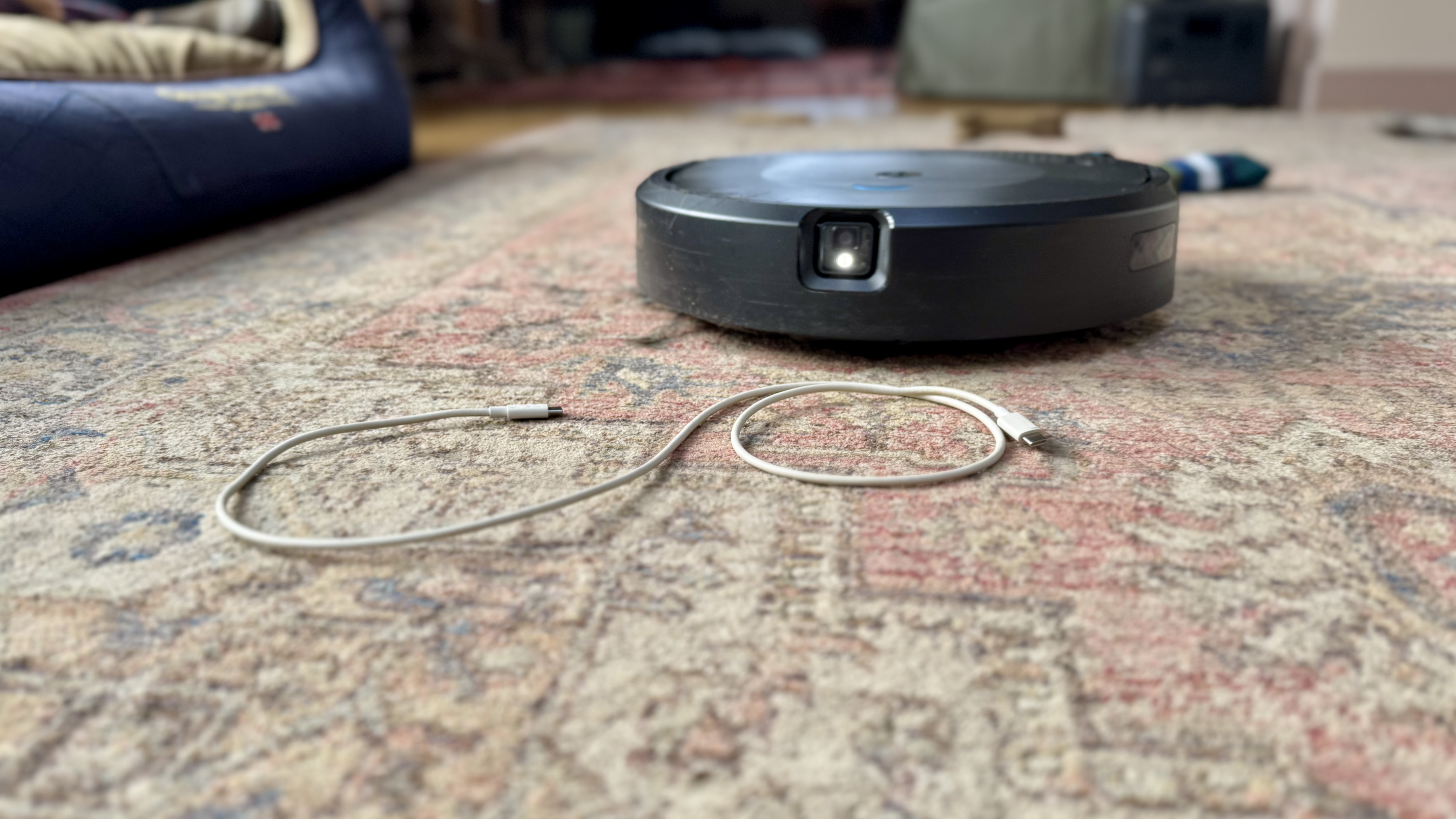
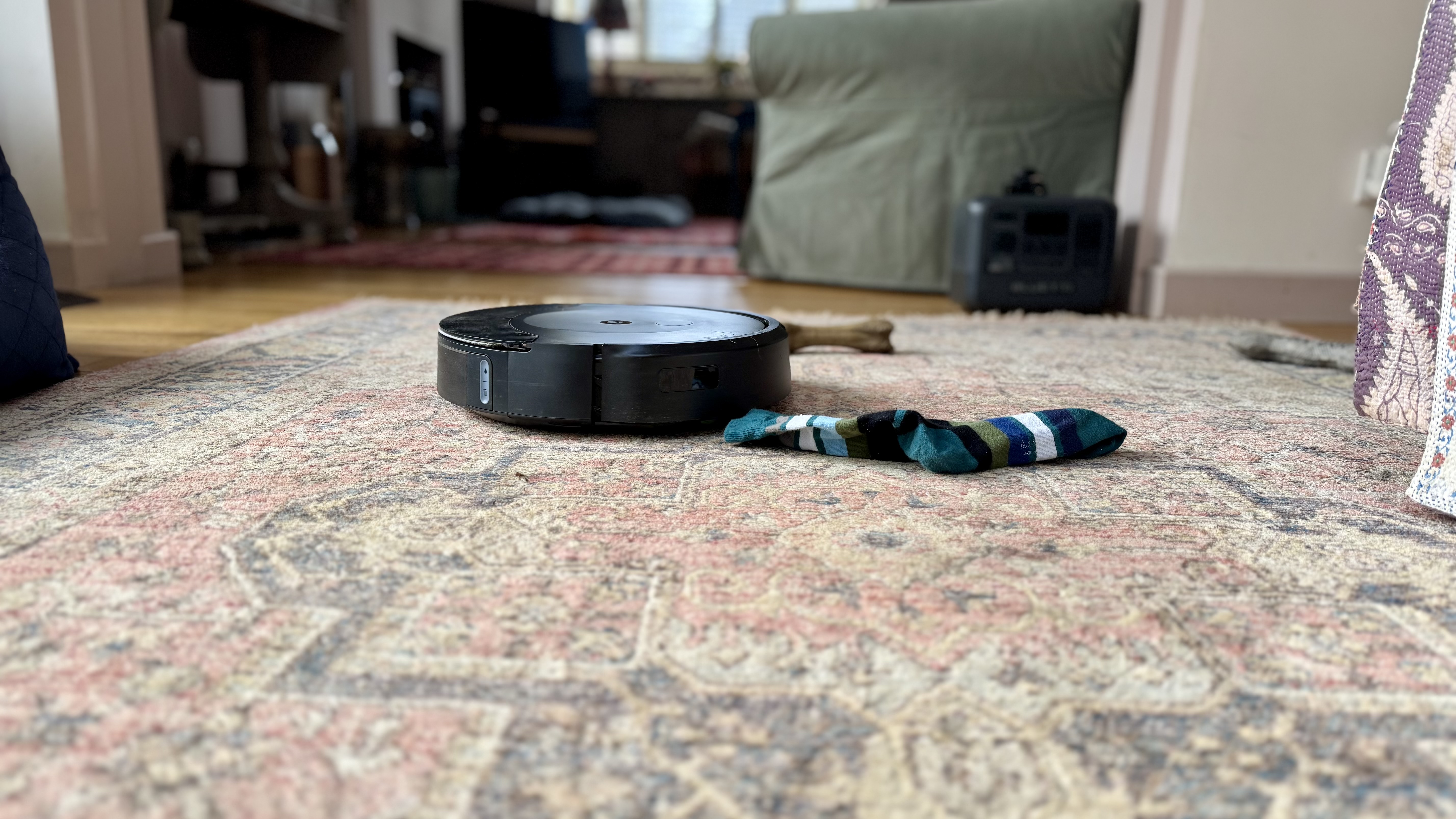
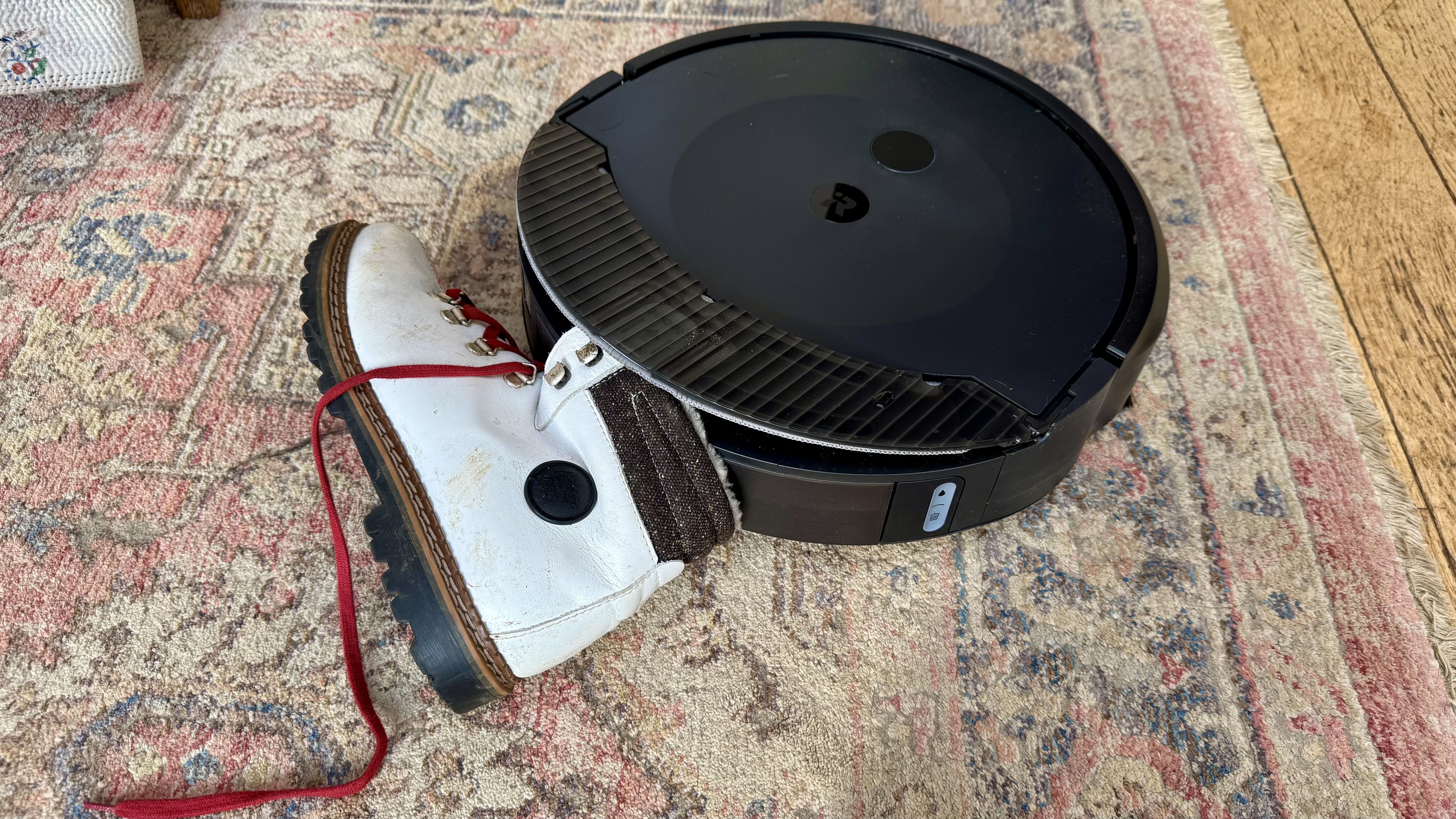
Would I rely on it to avoid dog mess? Despite iRobot stating that, like many of its forebears including the j7+ and j9+, the Combo 10 Max will avoid dog waste, I would never trust it to avoid it 100%. But then again, I'd never trust any robot vac to avoid pet waste – it's already happened to me with a previous product and I'm not going down that horrendously smelly toothbrush road again. The moral is – if you have a puppy in the home that hasn't been housetrained yet, do not rely on any robot vac to avoid any messes it makes.
I should finally add that the Combo 10 Max also bumps into walls and furnishings as part of its daily routine and this inevitably adds so many scuffs and scratches to the sides of the unit that it may look 5 years old after just a few weeks of use. However, there is a setting that will reduce this pinball issue at the expense of not performing as thorough a cleaning job along edges and around table legs.
Vacuum performance
I expected much better carpet performance from this machine, especially as it's equipped with twin rubber brush rollers. During my basic rug and living room carpet test, the Combo 10 Max occasionally ruffled up some Labrador hair into long bundled strands that it left behind and, while the robot's small internal bin showed some evidence of hair collection, it turned out that it hadn't collected as much as I expected.
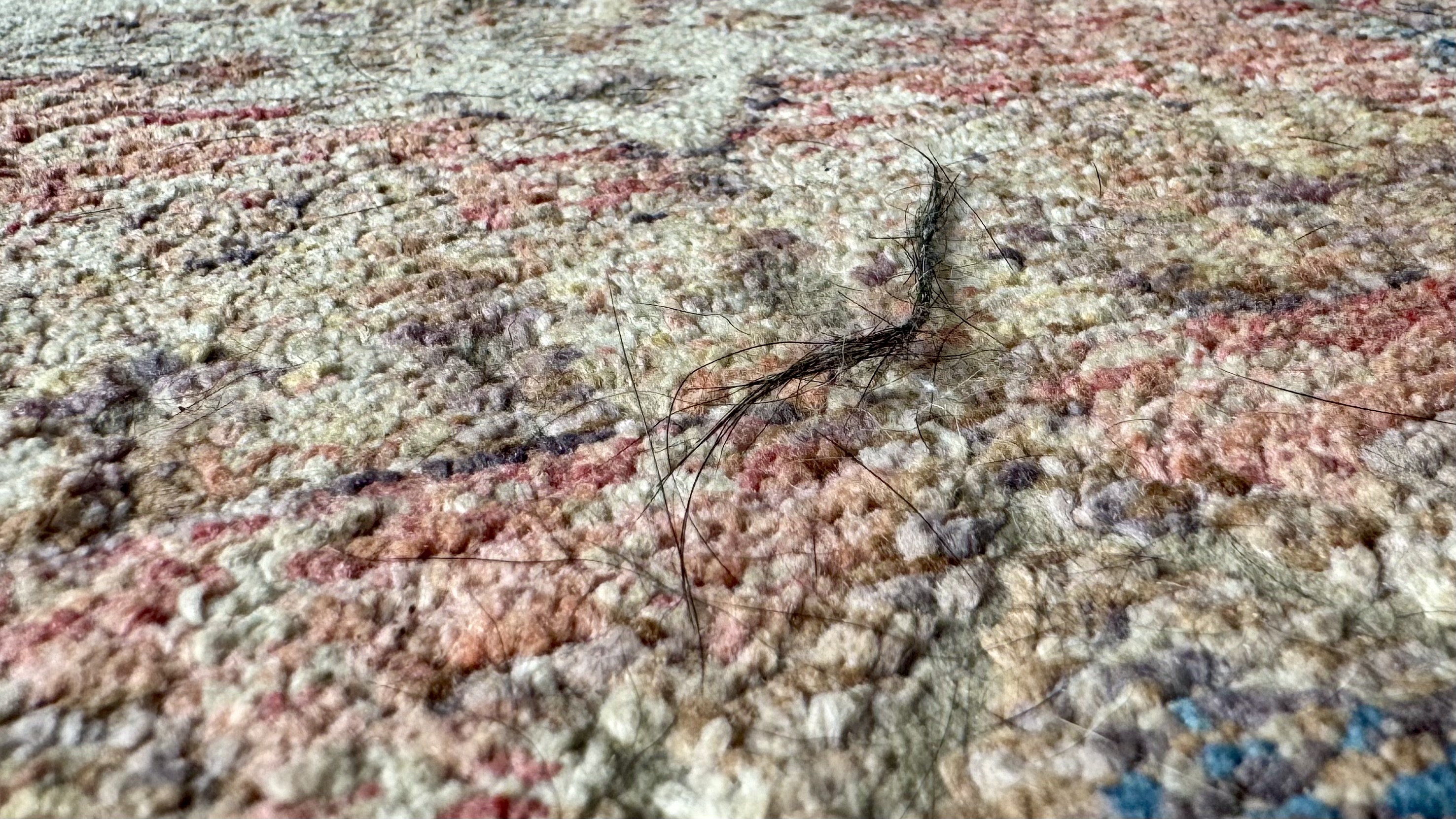
To check this, I sent the Roborock Qrevo Curv to the same sections of carpet and its bin contained even more hair than the Combo 10 Max – after it had already been there. If you have a lot of hairy pets, this might not be the best robovac for you (head to TechRadar's best robot vacuum for pet hair guide for bots that can handle pet hair).
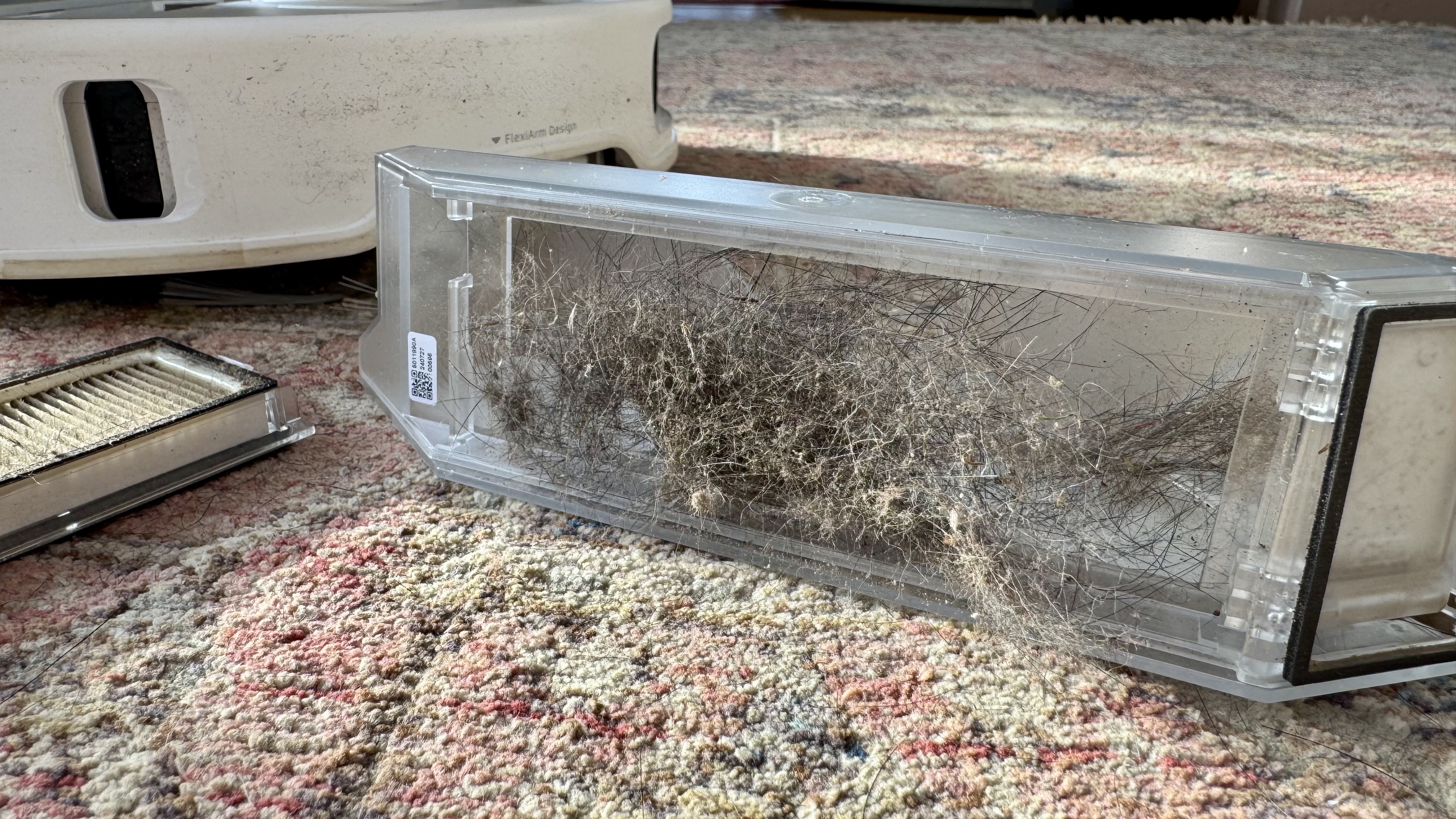
I then proceeded to embark on some proper pickup tests on both carpet and hard floor using TechRadar's menu of ingredients: raw oats, flour and biscuit crumbs. My Persian-style rug is only about 2.3 x 1.4m but the robot seemed to miss some sections entirely and the areas it did clean – including the specific test area – it didn't do very well. It literally made one speedy pass over the test patch and then started to erratically clean some but not all of the rest of the rug, leaving plenty of flour in its wake. It then went back to base.

Worse, while doing this test, it also proceeded to smear more rolled strands of pet hair that had clearly been shed since a previous test. After returning, the dock's incredibly loud suction kicked into action to remove the contents of the bot's bin and you can read about the results of this in a chapter below.
My final test included the same ingredients on my kitchen's wooden floor and it collected the vast majority of detritus in the first pass and then went back and forth over the section several times. It also trundled back to base midway through the kitchen session to have its bin emptied and then headed back to finish the task. Good result.
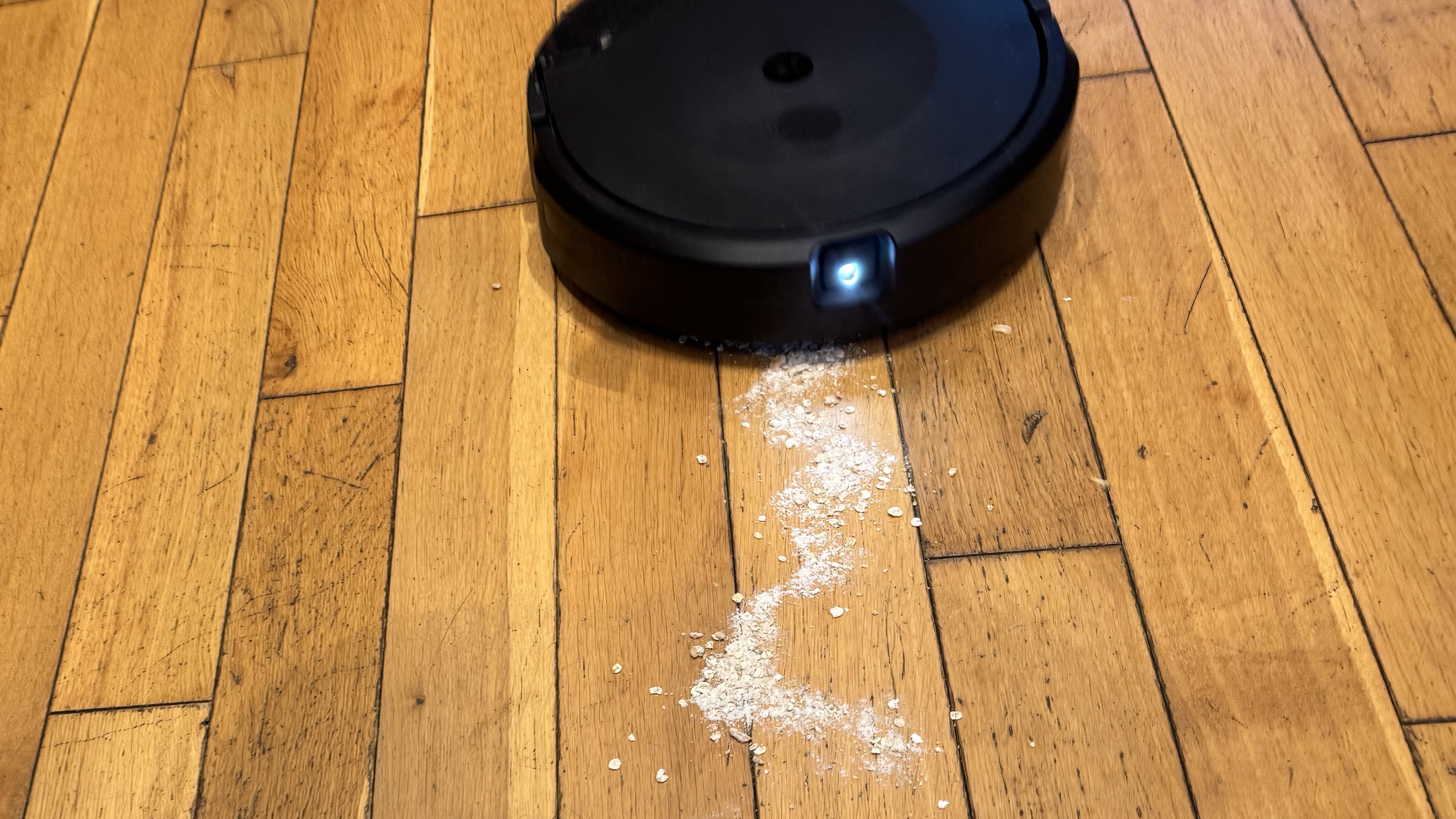
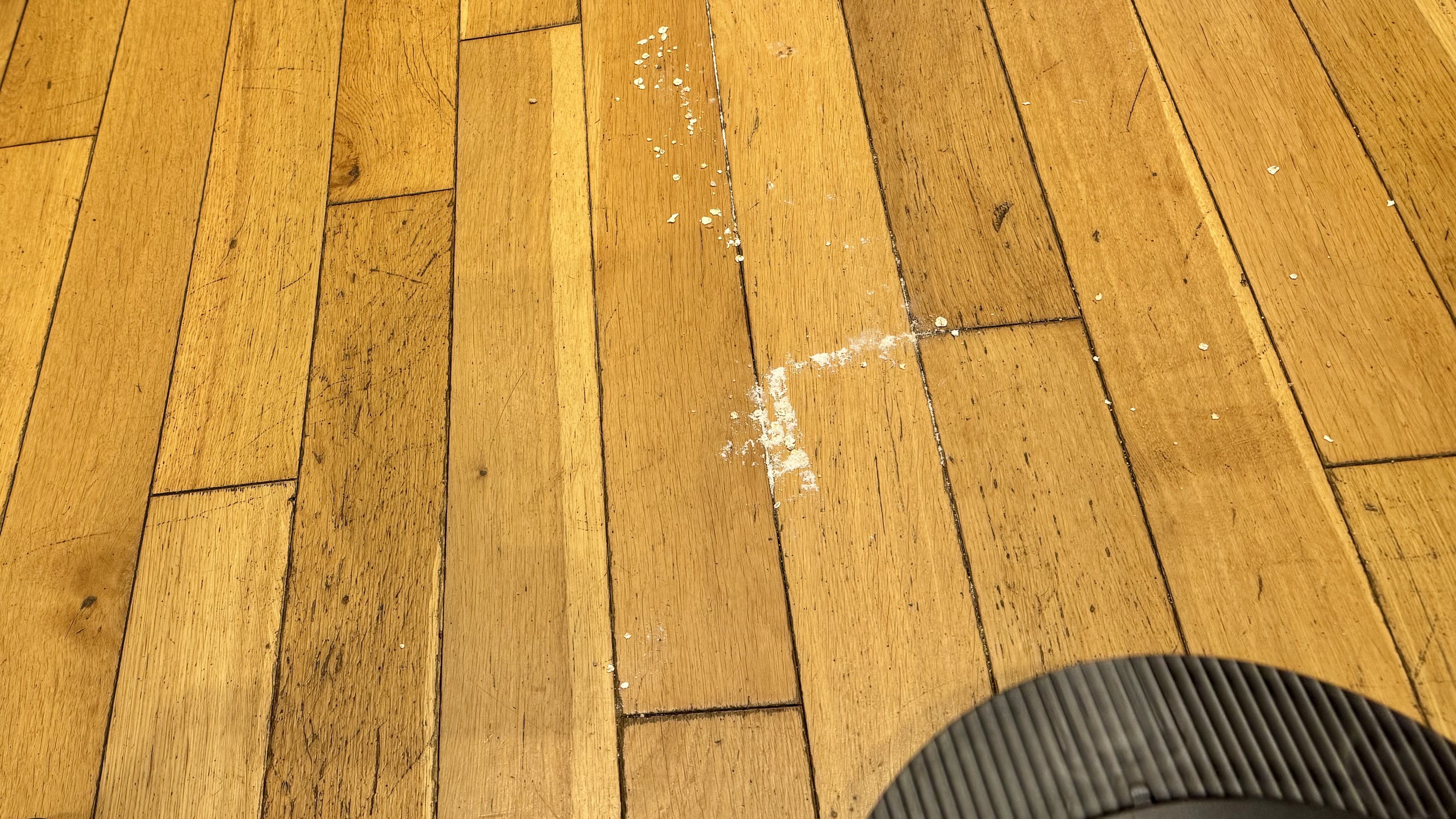
One especially annoying aspect with this system is the level of noise it creates. Firstly, the bot's side brush makes an irritating scuttling noise on hard floor and the high frequency whine of the vacuum section is audible from the other side of a room. By comparison, my Roborock Qrevo Curv is almost as quiet as a church mouse.
Mopping performance
Unlike much of the competition that has already moved over to plush spinning mop pads, the Combo Max 10 sticks to the old-fashioned method of dragging a thin, damp mop around behind it. Yes, the mop lifts completely off the floor and out of the way – but then the few centimeters that other models raise their mops is sufficient to prevent any damage to most carpet, bar, say, the deep pile variety. And anyway, some of the very latest bots with revolving mop heads now simply leave them in the dock if not being used.
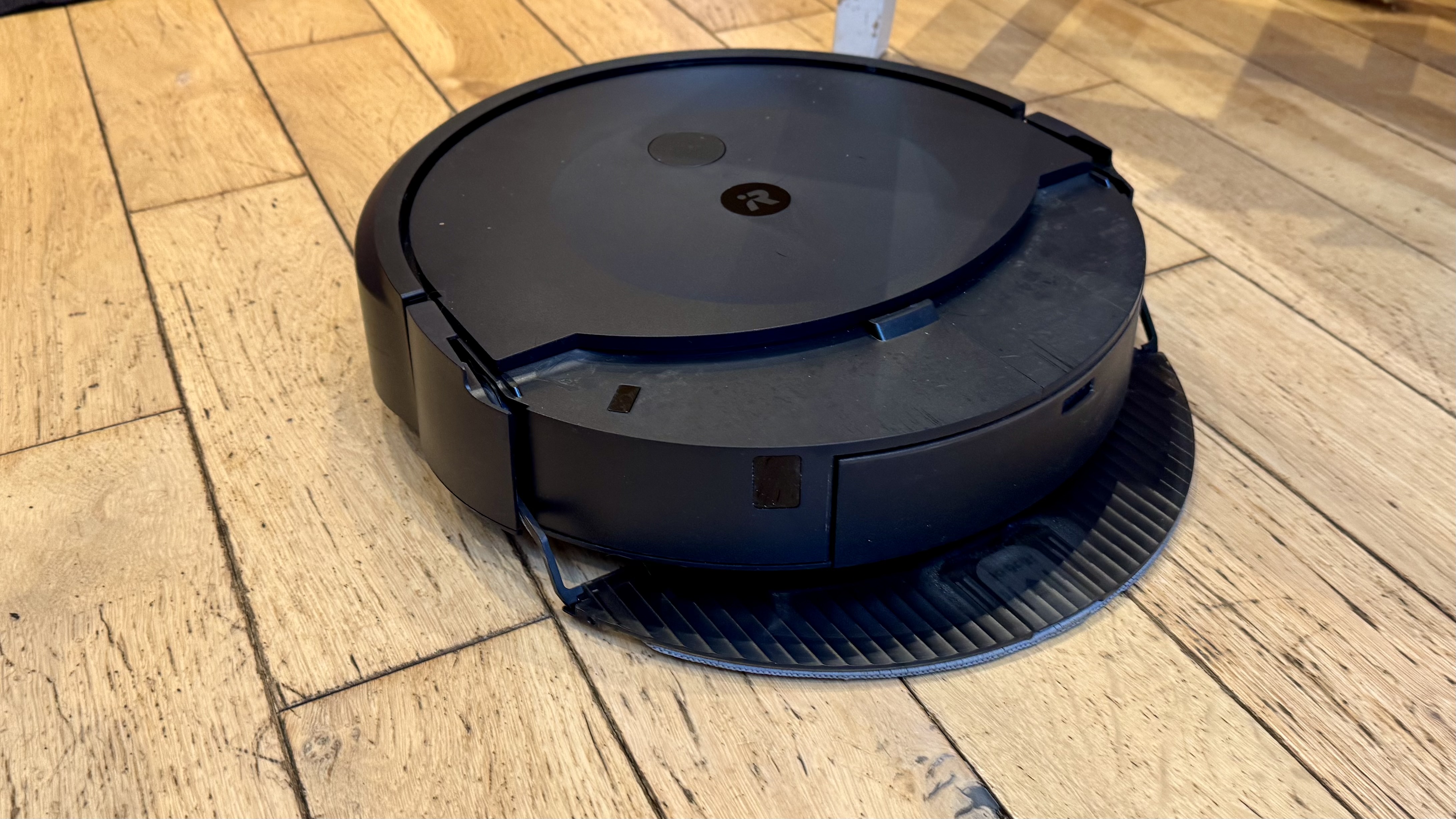
To give it its dues, the Combo Max 10's mopping is actually pretty decent, despite the lack of any dirt agitating vibration tech like that fitted to some earlier Roborocks. In my kitchen test, it mopped efficiently enough and no worse than some cheaper models I've tested. I also noticed that it also made a few back-and-forth passes over the stain I created so its SmartScrub system feature seems to work okay. Was it as good as a pair of spinning toweling mops? No, but for light mopping duties it'll do.
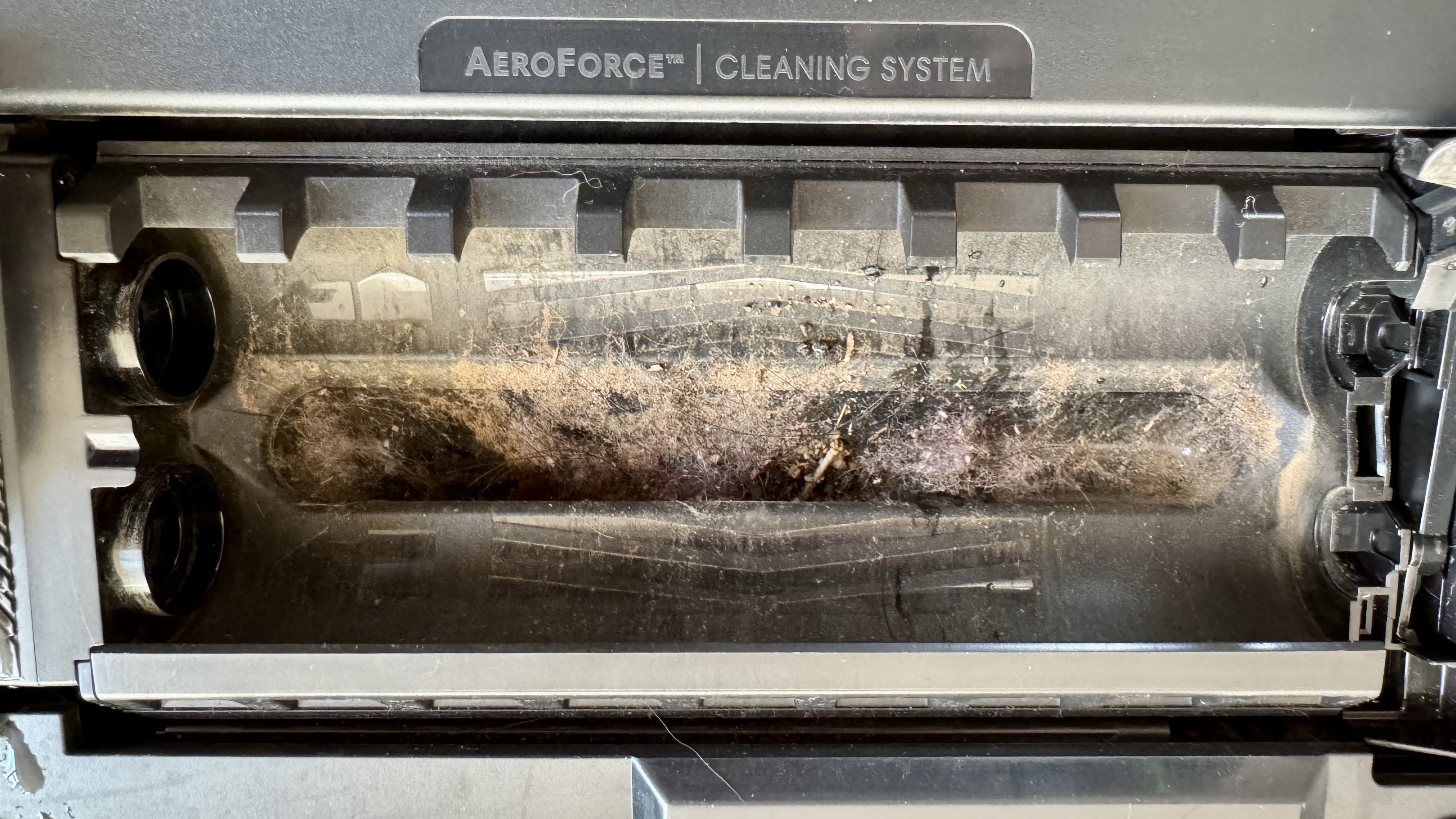
However, if set to vac and mop at the same time, this bot will still vacuum over areas it has already mopped and this causes extra dampness around the suction intake which will start to look very messy after a few tasks. Many robot vacs do that, but at least some models now provide the option to vac then mop, rather than do both at the same time.
Dock performance
Perhaps one of the most surprising disappointments I've experienced with the Combo Max 10 is the poor level of the AutoWash Dock's suction when emptying the robot's bin. Aside from being much louder than the norm (around 83dB), it has had continuing trouble emptying a full bin's worth of pet hair.
Firstly, it made a racket with a sound of rushing air and no whoomph sound that all robots make when a clump of hair is sucked from the robot's bin into the cleaning station's dust bag. When I removed the robot's bin, I noticed a large semi-circular clump of pet hair sticking out. This can happen with some robot vacs, especially those with poor docking station suction. So I removed the protruding clump and the rest of the contents were eventually sucked into the AutoWash Dock's large dust bag. Or so I thought.
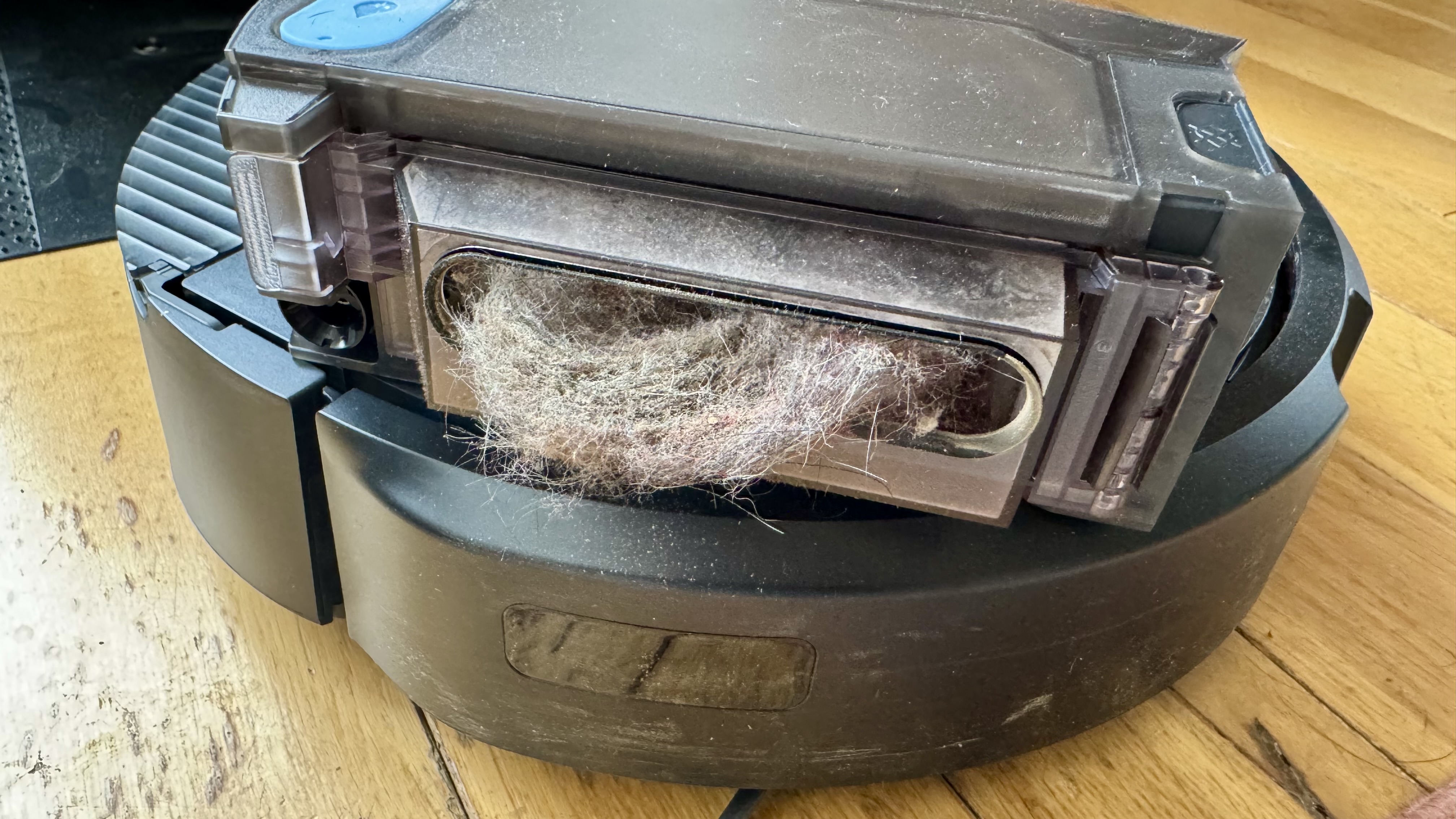
When I checked the robot's bin again, I noticed a lot of large sand-like particles and a few small pieces of gravel. These should have also been sucked into the main dust bag like every other robot vac I've ever reviewed. This very same anomaly occurred after my carpet and hard floor tests using raw oats, flour and crushed biscuits.
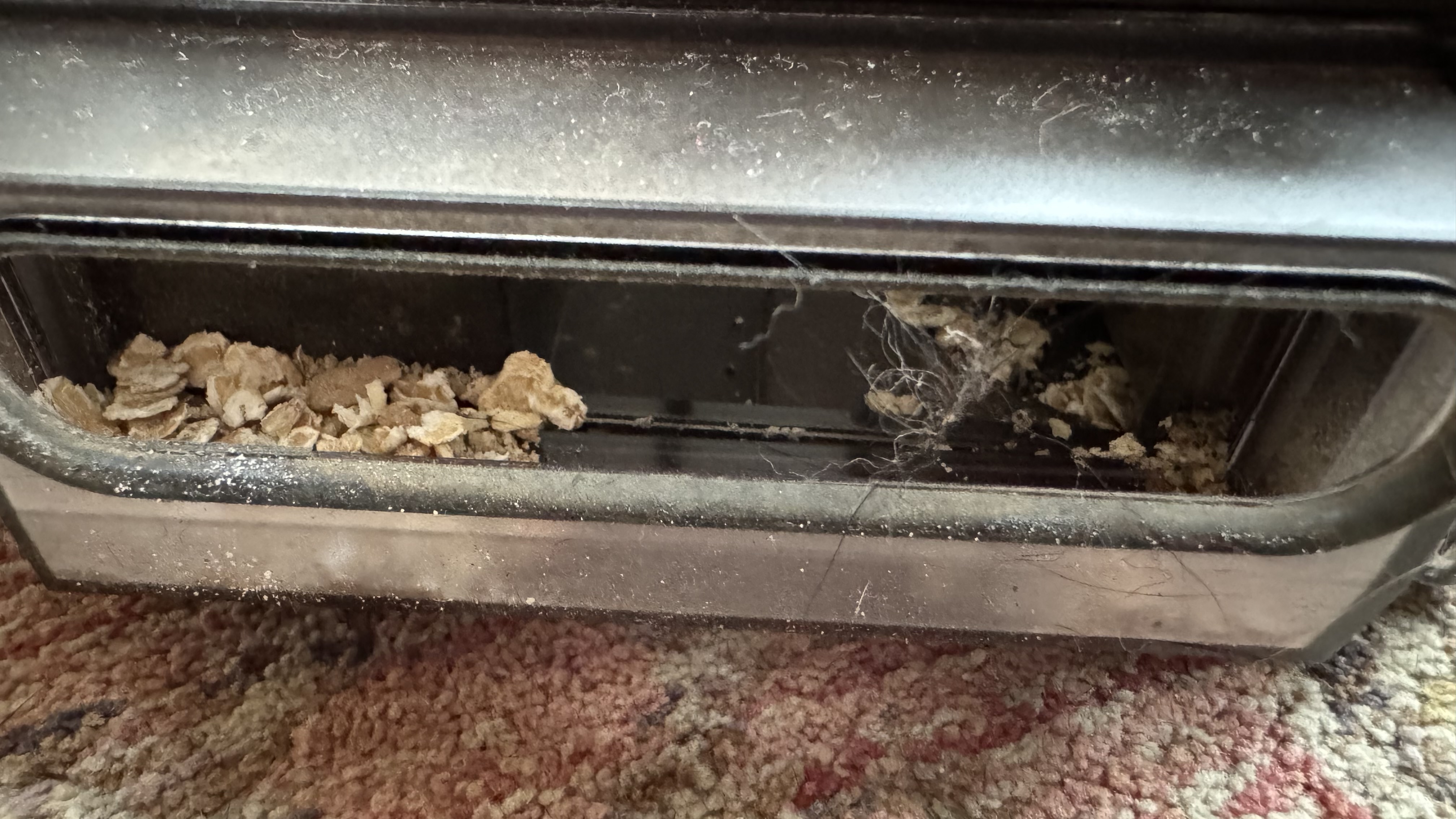
As my photos illustrate, the dock simply refused to suck the majority of oat flakes out of the robot's bin. And that's a major fail in my opinion. Put another way, I wouldn't recommend this vac if you live by the seaside or its cleaning station may struggle to remove all traces of beach sand from the bot's bin.
Regarding the dock's mop cleaning ability, I'm not convinced that a robot moving back and forth over a simple ribbed rubber roller is an efficient way to clean a mop. Yes it removes a lot of detritus and most signs of discolor but in no way can this system compete with the competition for cleanliness. Perhaps worse is the fact that, after having been washed, the mop itself is well and truly sodden, which means any subsequent mopping sessions will have it dragging around a soaking mop instead of a dampened one.
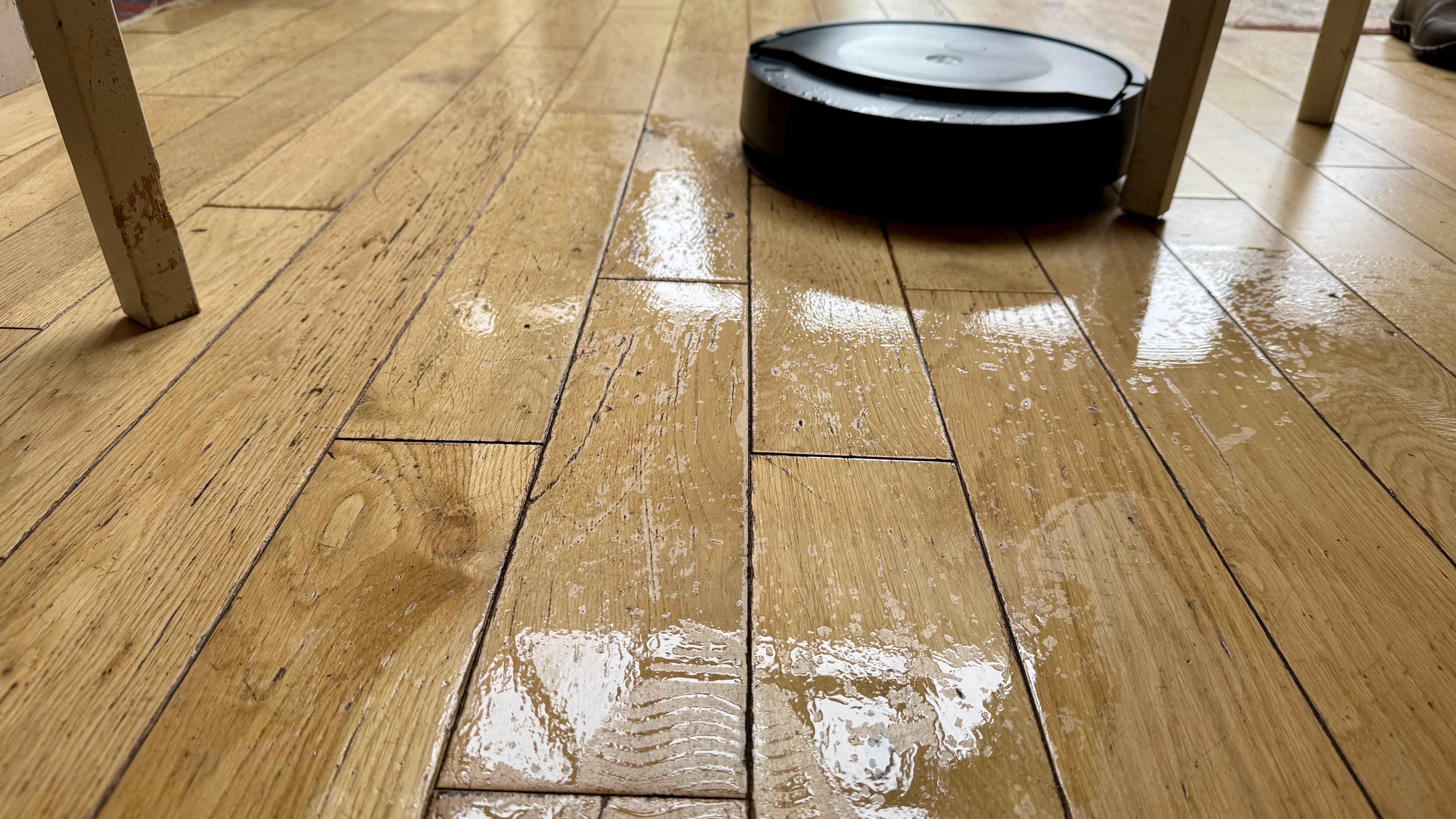
Also, the amount of water the cleaned mop leaves on top of the robot is unacceptable for a product in this price band. Yes there is that drying cycle I mentioned earlier, but all that really does is dry the cleaning area in the dock and not the mop itself. And, as we all know, a damp mop usually leads to mustiness and mold, especially after a few days of non-use.
- Performance score: 3 out of 5
iRobot Roomba Combo 10 Max review: app
- Decent home screen
- Basic customization
- Quite buggy
While there are some elements of the iRobot app that impress – like the instant home page access to pre-programmed favorite routines – I find it mostly confusing to use, clunky and full of bugs. For instance, I've received error messages whenever I tap on a Favorite routine while that particular routine is in operation. It should either allow you into that setting or remain inoperative. Instead you just get an unhelpful error message that says ‘please try again'.
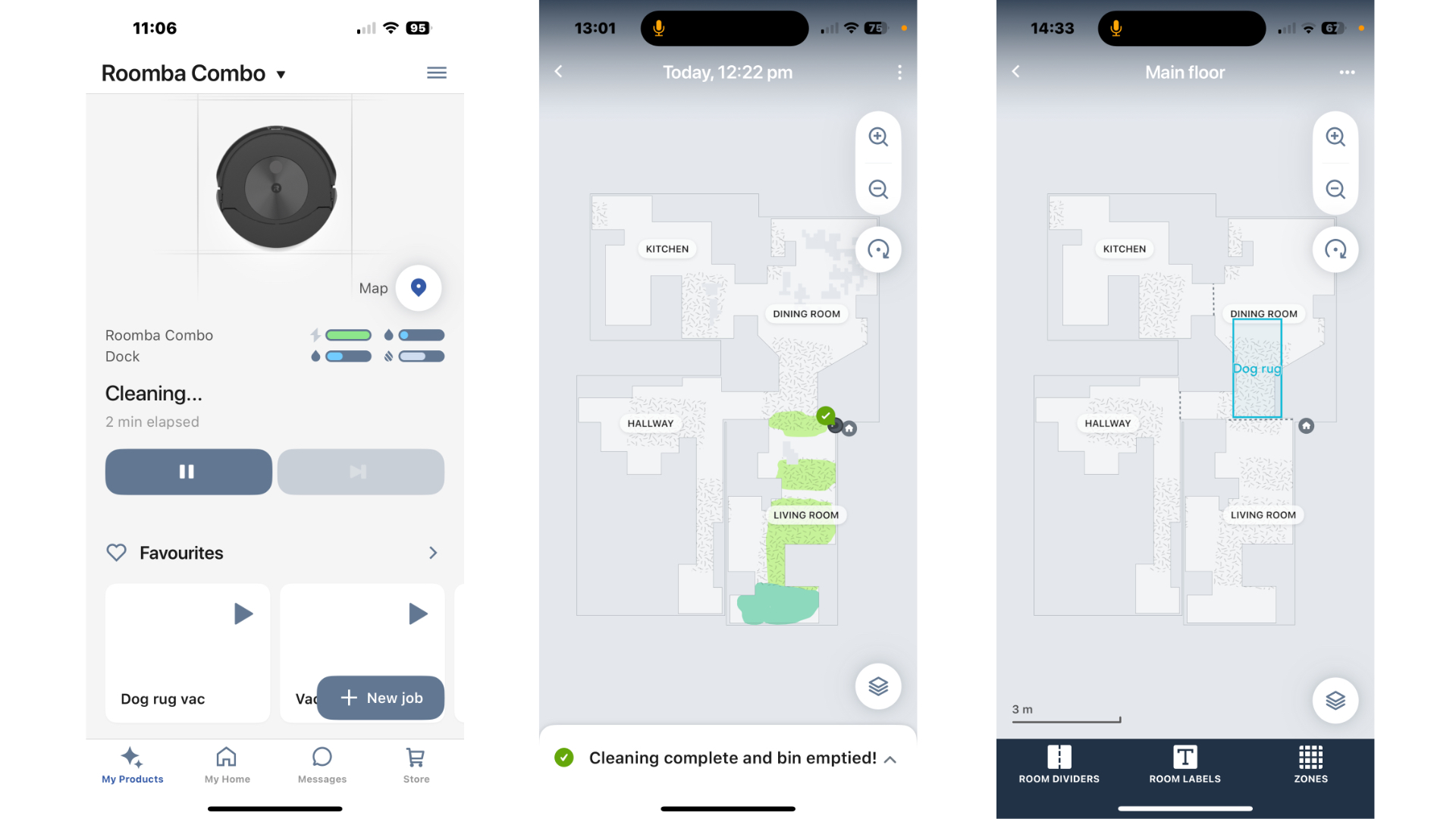
As alluded to above, I also find the floor plan map quite tricky to read because it's nowhere near as detailed as that of a LiDAR-based model. In fact, it's primitive and quite blocky. Take my dining room map, for instance. I have a large dog bed against the window but that area is represented by a slanted wall that makes no sense. This made it tricky to locate a precise area in front of the dog bed so I could create a specific zone-cleaning routine.
As you'd expect, the iRobot app provides options to create room dividers, room labels and – if you can work out the map – cleaning zones. It also lets you adjust various parameters like whether you want the dock to dry the mop pad (it doesn't totally dry it), set a child lock and locate the unit when it's lost by emitting a faint sound. You can also command this model using Alexa and Google.
- App score: 2.5 out of 5
Should you buy the iRobot Roomba Combo 10 Max?
| Attribute | Notes | Rating |
|---|---|---|
| Value | Lower-premium with current discounts, and still overpriced for what it offers. | 2.5/5 |
| Design | Well built with an attractive dock, but a number of design issues from a usability perspective. | 3/5 |
| Performance | Acceptable vacuuming and mopping performance, but dock functions are poor. | 3/5 |
| App | Very basic compared to other modern apps, with scant customization and unclear maps. | 2.5/5 |
Buy it if...
You value aesthetics
This bot has one of the best-looking docks on the market.
You have more hard floor than carpet
The vacuuming is decent on hard floor, and the light mopping is fine too.
You find a really good deal
This robovac is very overpriced at full price, but if you find a good discount, it could be worth considering.
Don't buy it if...
You have pets in the home
The pet hair pickup on this model isn't great, and can easily clog the self-empty mechanism.
You want a no-fuss option
This robot can be hard to control, and the app has a few annoying quirks, too.
You want ultra-quiet operation
Both the robot and cleaning base are noisy in operation.
How I tested the iRobot Roomba Combo 10 Max
TechRadar has a set testing regime which I followed to a tee. Aside from having it set to perform some daily cleaning routines, I also tested the model's vacuuming ability using oats, crushed biscuits and floor on both hard floor and medium-pile carpet. I also tested its mopping function on engineered hard wood flooring and how well it navigated various obstacles. Finally, I made notes on the cleaning station's performance at bin emptying and mop cleaning, measured the noise levels of both the robot and its docking station and spent a lot of time getting to know the iRobot app.
Read more about how we test robot vacuum cleaners.
- First reviewed November 2024
Derek Adams has been in consumer tech journalism since joining London listings magazine Time Out in the early ‘80s. He’s an experienced reviewer of cordless vacs and robot vacs, indeed anything that runs on batteries or has a plug attached. Derek also writes extensively for TechRadar’s sister site T3.com between playing drums and guitar with his bandmates in Red Box.
